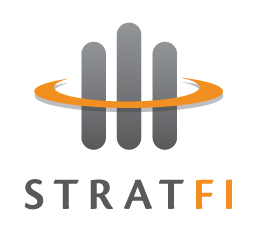The Logo Story
 Four years ago, I needed to create a logo for StratFI. The problem was my complete lack of artistic talent. Investment managers are good at other things, such as geeking out in front of the computer, obsessing over quarterly earnings reports, or making sense of economic statistics. We also love to read.
Four years ago, I needed to create a logo for StratFI. The problem was my complete lack of artistic talent. Investment managers are good at other things, such as geeking out in front of the computer, obsessing over quarterly earnings reports, or making sense of economic statistics. We also love to read.
After finishing The 4-Hour Workweek (quite possibly the most dangerous book on entrepreneurship ever written), I learned about crowdsourcing and decided to give it a try. It was a bit like asking everyone on the internet for advice.
The best place for this was at Crowdspring. I offered a few hundred dollars for a logo and business card set and was expecting a dozen or two designs. Within three days, there were one-hundred and forty-six submissions. Talk about overwhelmed with possibilities!
This whole crowdsourcing thing worked out pretty well, so it made sense to reach out to family and friends via Survey Monkey. Opinions were freely given and much appreciated. The most useful piece of feedback -- one of my favorite designs looked like "a logo for a dying 1990's pharmaceutical company." That made the selection process much easier.
After a week, the award was given to a designer in Malaysia, who didn't speak a word of English. Our entire correspondence was done via Google Translate. We had to change a few things to make my business cards "local", such as using American-style contact information. The final logo design is what you see at the top of this newsletter, and I was quite delighted.
What It All Means
The logo consists of three columns, wrapped by a "halo". These columns represent the pillars of our investment discipline.
Strategic Foresight is the process of using what we know about the future to make better decisions today. Having a graduate degree as a futurist has been tremendously useful in finding emerging opportunities for clients.
Fundamental Analysis is about crunching the numbers and performing due diligence on individual companies. This is where being a Chartered Financial Analyst is essential. I simply couldn't be a stock-picker or a portfolio manager without this training.
Technical Analysis provides information about investor sentiment. It involves looking at various indicators to determine the best entry and exit points. This is a whole different discipline, and comes from being a Chartered Market Technician.
Together, these disciplines took over twenty-years of ongoing study. They provide tools for the three key questions of investing --where to find opportunities, what companies to buy, and when to invest.
You may also notice that the middle column is a little taller than the other two. When viewed together, they form a simple bell curve (a key concept in statistics).
By far the easiest symbol to understand is the golden "halo". This reflects the importance of having good relationships and solid ethics. It is about always trying to do the right things for people. Without it, nothing else matters.
James H. Lee, CFA, CMT, CFP®
